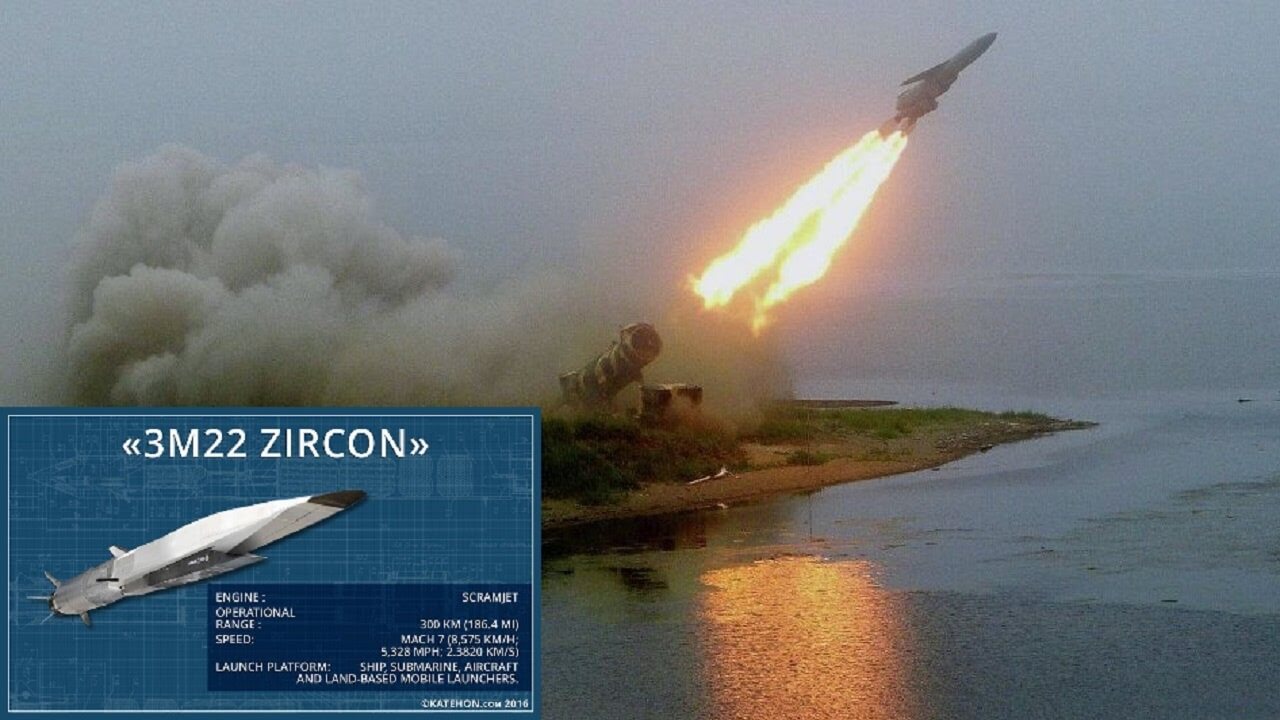In a breakneck competition with its rivals on the seas, the ambitious Hypersonic Air Launched Offensive Anti-Surface (HALO) program of the US Navy has received a big boost, with defense manufacturer Raytheon announcing a key accomplishment.
In a press release published on January 9, Raytheon announced the successful completion of the pivotal technical review and prototype fit-check for the HALO program, which the US Navy has put its money on.
“This advancement marks a crucial phase in enhancing the Navy’s ability to operate and assert dominance in contested environments, particularly in anti-access/area-denial (A2/AD) scenarios,” the manufacturer said in a statement marking the review.
Highlighting the significance of this achievement, Raytheon’s President of Advanced Technologies, Colin Whelan, said, “This is a key step in fielding the Navy’s first anti-ship hypersonic missile.”
In addition, Whelan stated, “It’s critical that our warfighters have proven technology that can address advanced threats in contested environments, and they need this technology now.” He emphasized the need to arm American soldiers with cutting-edge technology to combat sophisticated attacks.
Raytheon noted that the development of the missile under the HALO program has been accelerated as the prototype’s digital and physical design concepts and models were produced using model-based and digital engineering processes in just a few months.
Most significantly, the company announced a successful fit check of the prototype with the US Navy’s F/A-18 Super Hornet to test the compatibility of the missile with the aircraft and the existing support equipment. The carrier-capable Super Hornets are the bulwark of the US Naval power projection.
Although the missile’s specifications remain a secret, it is predicted to be a scramjet-powered weapon. It will likely be integrated on F/A-18E/F Super Hornets and F-35C Lightning II and potentially the next-generation fighter jets.
The emphasis on anti-ship capabilities corresponds with anticipating a possible Western Pacific Ocean confrontation with China. Interestingly, models of a conflict over Taiwan indicate that long-range anti-ship missile performance would be a significant factor in the outcome.
The US Navy’s enhanced focus on its hypersonic program also emanates from the similar capability of its fiercest rivals: China and Russia. China, for one, demonstrated the successful launch of a hypersonic anti-ship ballistic missile, DF-21. On the other hand, Russia has its Zircon anti-ship hypersonic missiles.

The US Navy is developing a hypersonic glide vehicle weapon called ‘Conventional Prompt Strike,’ which will reportedly be integrated into the Virginia-class submarines and the Zumwalt-class stealth destroyers in their vertical launch cells. At least initially, its primary purpose seems to be hitting stationary surface targets.
The missile produced under the HALO program is expected to build on the capabilities of the CPS hypersonic missile. Several reports say it would most likely be a carrier-based hypersonic anti-ship missile. The US Navy has remained tight-lipped on the program, especially as its other hypersonic efforts have not done very well recently.
US Navy’s HALO Missile Program
The goal of the US Navy’s HALO program is to develop a missile system that is based on carriers. The Navy’s ability to establish authority in contested battlespaces, especially in anti-access/area-denial (A2/AD) settings, makes this system revolutionary in naval combat.
It is consistent with the Navy’s long-range firing strategy, which addresses the requirement for cutting-edge weapons in the face of increasingly complex international challenges.
Naval Air Systems Command (NAVAIR) announced in March that the US Navy had awarded separate contracts to Raytheon Missiles & Defense and Lockheed Martin for the initial development of a long-range, high-speed missile suitable for carrier-based operations for the development of a hypersonic missile under the HALO program.
At the time, NAVAIR noted that for the first contracts awarded to Raytheon and Lockheed Martin, technological research and maturation would be facilitated by a preliminary design evaluation of the propulsion system needed for an air-launched hypersonic weapon that can be carried on an aircraft carrier.
The awards’ contract period is expected to end in December 2024, and each company’s preliminary design review will be working toward a prototype flight test. Raytheon’s latest announcement is, thus, significant.
HALO program aims to develop a conventional cruise missile with scramjet or ramjet propulsion that can fly at lower altitudes. Such engines, which compress air using onrushing supersonic flow rather than a compressor, are incredibly efficient at maintaining high speeds. Nevertheless, to get them to high speeds in the first place, they typically need separate boosters.
The Navy presently possesses the advanced anti-ship Maritime Strike Tomahawk. It also has an arsenal with Naval Strike Missiles and shorter-range Harpoon missiles. The JSOW glide bomb, SM-6 air defense missiles, and HARM anti-radar missiles are a few additional less specialized guided weapons that can be used against moving naval targets.
These missiles are not hypersonic despite their long-range strike capabilities. So, the US Navy currently possesses anti-ship missiles and will shortly acquire the CPS hypersonic missiles, which will likely be fielded by 2025. However, none of these weapons can outmatch the HALO.
According to the Navy, HALO should be built with maximum speed in mind. Modern ships typically carry several close-defense Gatling guns, dozens of missiles, and potent air defense radars as part of their multi-layered air defense systems.
Having missiles that travel at high speed increases the likelihood that they will breach those defenses. It shortens the time it takes to reach the target, maybe eliminating the opposition before they can unleash all of their devastating arsenals.
This is noteworthy given that China, the primary adversary and the biggest threat to the United States, boasts of formidable anti-access/area-denial capabilities. If the two sides go to war, it would be challenging for the US military to get through Chinese shores.
- Contact the author at sakshi.tiwari9555 (at) gmail.com
- Follow EurAsian Times on Google News